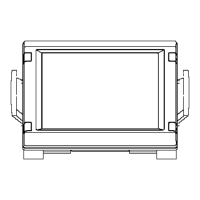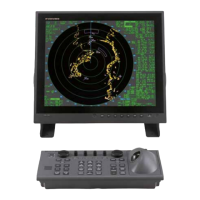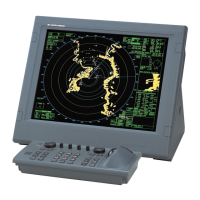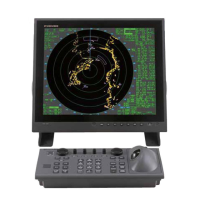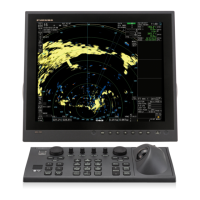Do you have a question about the Furuno FAR-2807 and is the answer not in the manual?
General information and user guidelines for operating the manual.
Instructions for proper disposal of the product according to regulations.
Guidelines for safe and environmentally sound disposal of used batteries.
Details on potential hazards from radar RF energy and necessary precautions.
Information regarding warning labels attached to the equipment and their importance.
Overview of key features and capabilities of the radar system.
Information on operational limitations based on geographical location and environmental factors.
Details on available radar specifications and their corresponding function availability.
Configuration details when using FURUNO-supplied monitors for the radar system.
System configuration details for the blackbox type installation of the radar.
Step-by-step instructions for powering on the radar system safely and correctly.
Overview of the control unit, its types, and key functions for operating the radar.
Navigation through the main menu system for accessing various radar functions and settings.
Procedures for selecting and initializing the receiver tuning method for optimal performance.
Description of different presentation modes like Head-up, Course-up, North-up, and True Motion.
Techniques for measuring target range using fixed range rings and the variable range marker (VRM).
Setting up target alarms to alert the navigator about targets entering specific areas.
Explanation of common false echoes like multiple and sidelobe echoes and their causes.
Description of SART operation and how SART marks are displayed on the radar.
Information about RACON beacons and their appearance on the radar display.
Important precautions for using the Target Tracking (TT) system safely and effectively.
Details on keyboard and trackball controls used for TT functions.
Procedure for enabling automatic target acquisition based on defined conditions.
Steps for manually acquiring targets for tracking.
Setting up and managing TT collision alarms for CPA and TCPA.
Overview of keyboard and trackball controls for operating the AIS system.
How to display, hide, or set criteria for AIS targets on the screen.
Process for activating specific or all AIS targets to display course and speed vectors.
Inputting voyage-related data such as navigational status, ETA, and destination.
Configuration of AIS collision alarms based on CPA and TCPA values.
Explanation of different display modes available for the video plotter function.
Details on various presentation modes like North-up, Course-up, and Head-up.
Functionality for creating and displaying radar maps with navigation data.
Overlaying chart data from different card types onto the radar image.
Procedures for entering, editing, and managing waypoints for navigation.
How to initialize memory cards and record data such as tracks and settings.
Recommended schedule for routine checks and maintenance to ensure optimal performance.
Instructions for safely replacing fuses to protect the equipment from overcurrent faults.
Procedure for replacing the battery on the GC board for preserving gyro data.
Common problems and their solutions for restoring normal operation without internal checks.
Procedures for hardware and software troubleshooting for qualified service personnel.
How to execute diagnostic tests to check major circuit boards and components.
Information on serial interface protocols and data sentences used for system integration.
Details of internal parts and their locations, aiding in component identification.
A comprehensive list of abbreviations used throughout the manual for quick reference.
Visual explanations of various symbols used on the radar and video plotter displays.
A detailed list of system and sensor error alerts, their meanings, and required actions.
| Type | Marine Radar |
|---|---|
| Resolution | 1024 x 768 pixels |
| Range | 0.125 - 96 NM |
| Frequency | 9410 MHz ± 30 MHz |
| Rotation Speed | 24 RPM |
| Power Supply | 100-240 VAC |
| Beamwidth | 1.2° (horizontal) |




